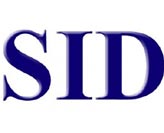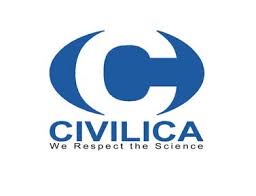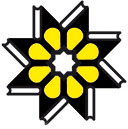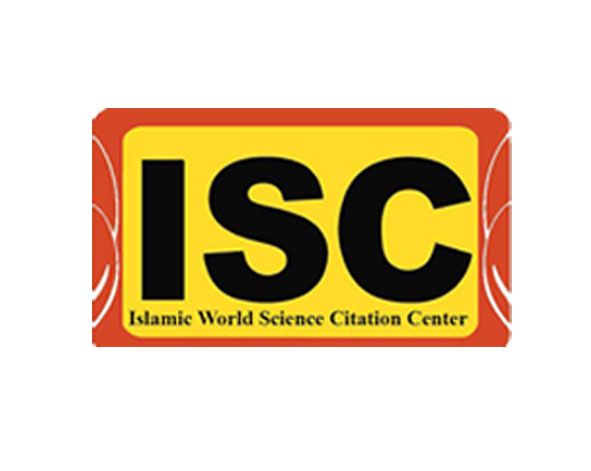About the journal
The Journal of Environmental Research and Technology is affiliated with the Environmental Research Institute of Academic Center for Education, Culture and Research. Initially launched in 2004 under the title “Environment”; Since 2016, its name was changed, and it has continued its activities under the title "Environmental Research and Technology." Given that the Environmental Research Institute was established with an interdisciplinary research approach and has successfully pursued this mission, the Journal of Environmental Research and Technology, as a biannual publication, follows a similar objective. It focuses on publishing innovative and applied research aimed at addressing the country’s environmental challenges. The journal covers a wide range of topics, including environmental pollution, waste processing, renewable energies, biodiversity, natural environmental studies, environmental economics and law, education, artificial intelligence in environmental applications, forestry sciences, environmental management design and assessment, and ecological agriculture. Additionally, in 2022, the Environmental Research Institute signed a memorandum of understanding with the Iranian Society for Environmental Assessment. In the same year, the journal received its ISC accreditation from the Islamic World Science Citation Center.
-
Open Access Article
1 - A Novel Strategy to Support Environmental Protection Against Salmonella
Ali Maddahian * ، Reza Naseri Harsini ، hooshang Dehghanzadeh ، Seyed Mousa Saadatmirghadim ، Marzieh Alidoust ، Hamed KioumarsiIssue 17 , Vol. 10 , Spring_Summer 2027 -
Open Access Article
2 - Reduction of fluoride ions from phosphate tank overflow water in an automotive paint shop using the electrocoagulation method
سید جواد مدبر ، Ali Sayadi malakami ، Amir Emami * ، Naeemeh Shirakbari ، زهره رشمئيIssue 17 , Vol. 10 , Spring_Summer 2027 -
Open Access Article
3 - Investigating the environmental benefits and economics of integrated pest management (IPM)
Bahareh Rafiei * ، Fatemeh MoazzeziIssue 17 , Vol. 10 , Spring_Summer 2027 -
Open Access Article
4 - Assessing the Ecotourism Potential of Urban Wetlands Using Strategic SWOT Analysis: A Case Study of the Aynak Wetland, Rasht
Seyyed Mahmood Hashemi * ، Pooya Talebi ، Fatemeh HamivandIssue 17 , Vol. 10 , Spring_Summer 2027 -
Open Access Article
5 - Optimization of Coagulation–Flocculation Process for Organic Load Reduction in Latex Industry Wastewater Using Response Surface Methodology (RSM)
Fariba Ostovar * ، saeed poorkareem ، Niloofar Abedinzadeh ، Mohadese TavakoliIssue 17 , Vol. 10 , Spring_Summer 2027 -
Open Access Article
6 - Simulation and Impact Assessment of Land Use and Land Cover Changes Inside and Around Protected Areas in Lorestan Province, Iran
Seyede Zahra Mousavi nadarvand ، Abdolrassoul Salman Mahiny * ، Peyman Karami ، seyedhamed mirkarimi ، Hamidreza KamyabIssue 17 , Vol. 10 , Spring_Summer 2027 -
Open Access Article
7 - Assessment of the Techno-Economic Potential of Solar Power Systems in Residential Buildings in Gilan Province
Mir Hamed Hakemzadeh ، Shahram Sharifi ، mohammad reza golriz eram sadati ، Maryam Haghighi ، morteza karimi ، seyyed javad mousavi *Issue 17 , Vol. 10 , Spring_Summer 2027 -
Open Access Article
8 - Detection of cyanide ion in aqueous medium using an azo dye containing phenanthroimidazole
Zahra Zamiraei * ، Kurosh Rad MoghadamIssue 17 , Vol. 10 , Spring_Summer 2027 -
Open Access Article
9 - Methods for Assessing the Environmental Impacts of the Steel Industry within the DPSIR Framework
mansoureh abbasi * ، Saeed KarimiIssue 17 , Vol. 10 , Spring_Summer 2027 -
Open Access Article
10 - Study on Aflatoxin Contamination and Determination of the Type and Level of Pesticide Residues in Pistachio Nuts
Mehdi Mohammadi-Moghadam * ، Anna Abdolshahi ، Alireza Barjasteh ، Mehdi Basirat ، Masoumeh Haghdel ، Saeed MehrjouIssue 17 , Vol. 10 , Spring_Summer 2027 -
Open Access Article
11 - Investigating the ecological footprint of the paper production process based on the life cycle assessment approach (Case study: Persia Golestan Paper Factory)
Shaghayegh Ebrahimi ، seyedhamed mirkarimi ، Sepideh Saeidi * ، Fatemeh HashemiIssue 17 , Vol. 10 , Spring_Summer 2027 -
Open Access Article
12 - Analysis of the Connectedness of Economic and Environmental Volatility in Iran (2006–2023)
Saeed Kian Poor * ، Mohsen Hajian ، Sepideh AzimiIssue 17 , Vol. 10 , Spring_Summer 2027
-
Open Access Article
1 - A review of widely used industrial dyes and their removal methods from water and wastewater
Fariba Ostovar ، Marzieh Hasanzadeh *Issue 7 , Vol. 5 , Spring_Summer 2020 -
Open Access Article
2 - Determination of the Relationship between Water Turbidity (NTU) and Total Suspended solids (TSS) in drip irrigation
farhad mirzaei * ، zeynab sojoodiIssue 6 , Vol. 4 , Autumn_Winter 2020 -
Open Access Article
3 - Evaluation of natural adsorbents in water and wastewater treatment
Mohadeseh Tavakoli *Issue 7 , Vol. 5 , Spring_Summer 2020 -
Open Access Article
4 - Assessment and Environmental Impact Analysis of the Urban Streets using Multi-Criteria Decision Making Model (Case Study: 58-meter street of Arak)
maryam hosseinkhani * ، amir ansari ، amir Hedayati AgmashhadiIssue 6 , Vol. 4 , Autumn_Winter 2020 -
Open Access Article
5 - Cheese whey recycling, the right approach to prevent environmental damage
Zahra Katabehei Moradi ، Maryam Haghighi khomami ، Hamed Kioumarsi ، hooshang dehghanzadeh ، saeed tamadoni jahromiIssue 7 , Vol. 5 , Spring_Summer 2020 -
Open Access Article
6 - Investigation of Congored dye removal from industrial waste water using adsorption method
Mohadeseh Tavakoli * ، niloofar AbedinzadeIssue 6 , Vol. 4 , Autumn_Winter 2020 -
Open Access Article
7 - Assessing the consequences of visa cancellation with the Republic of Azerbaijan on the sustainable development of the northwestern of Iran
رسول افضلی ، Abolghasem mahmoodi ، afsaneh bashiriIssue 6 , Vol. 4 , Spring_Summer 2019 -
Open Access Article
8 - Prioritization of energy recovery technologies from municipal solid waste (Case study of Mashhad)
Arman Shahnazari *Issue 7 , Vol. 5 , Spring_Summer 2020 -
Open Access Article
9 - Comparison of support vector machine and artificial neural network classification methods to produce landuse maps (Case study: Bojagh National Park)
Mahsa Abdoli Laktasaraei ، Maryam Haghighi khomami *Issue 8 , Vol. 5 , Autumn_Winter 2021 -
Open Access Article
10 - Implementation of Green Library Component in Iranian academic libraries
Fatemeh Rezaeimanesh ، mohsen Haji Zeinolabedini ، Amir Reza Asnafi *Issue 11 , Vol. 7 , Spring_Summer 2022









